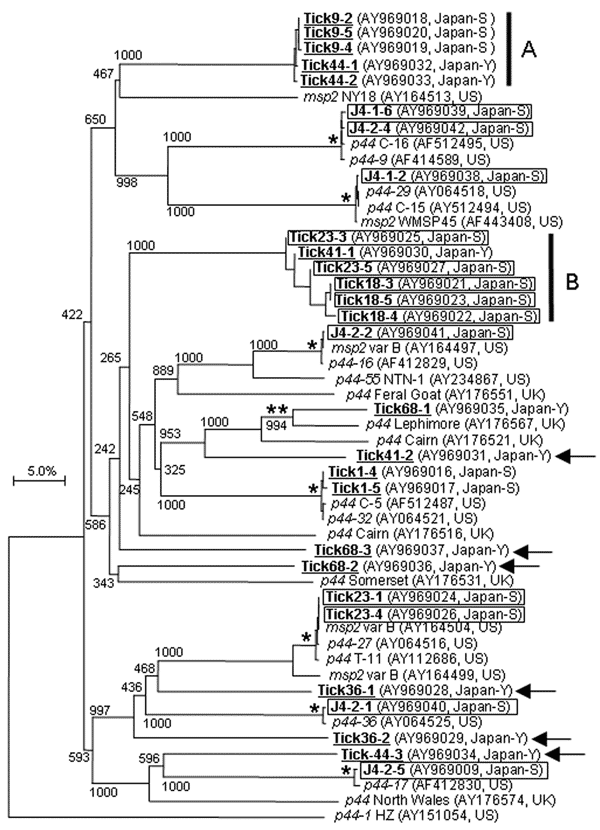Volume 11, Number 11—November 2005
Dispatch
Anaplasma phagocytophilum–infected Ticks, Japan
Figure 2

Figure 2. Phylogram of Anaplasma phagocytophilum p44/msp2 including Japanese paralogs. A) Cluster from Ixodes persulcatus. B) Cluster from I. ovatus, except for Tick41-1. The tree was constructed using the neighbor-joining method. Numbers on the tree indicate bootstrap values for branch points. Japanese p44/msp2 paralogs from I. persulcatus and I. ovatus are underlined and boxed, respectively, in bold. A single star shows p44/msp2 clusters with 99.2%–100% similarities and double stars show a cluster with 85.6% similarity. Two vertical bars and 6 arrows indicate Japanese p44/msp2 clusters and paralogs, respectively, which are distinct from the previously identified p44/msp2 (<73.1% similarity). A horizontal bar indicates percentage of sequence divergence. Accession numbers and location (Japan-Y [Yamanashi], Japan-S [Shizuoka], US [United States], and UK [United Kingdom]) are in parentheses.